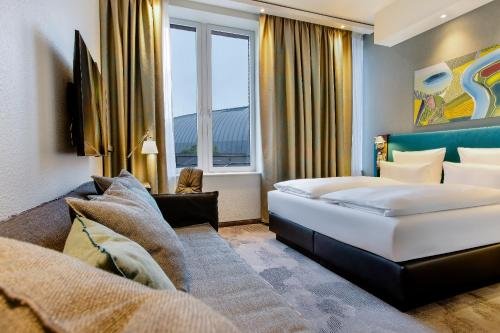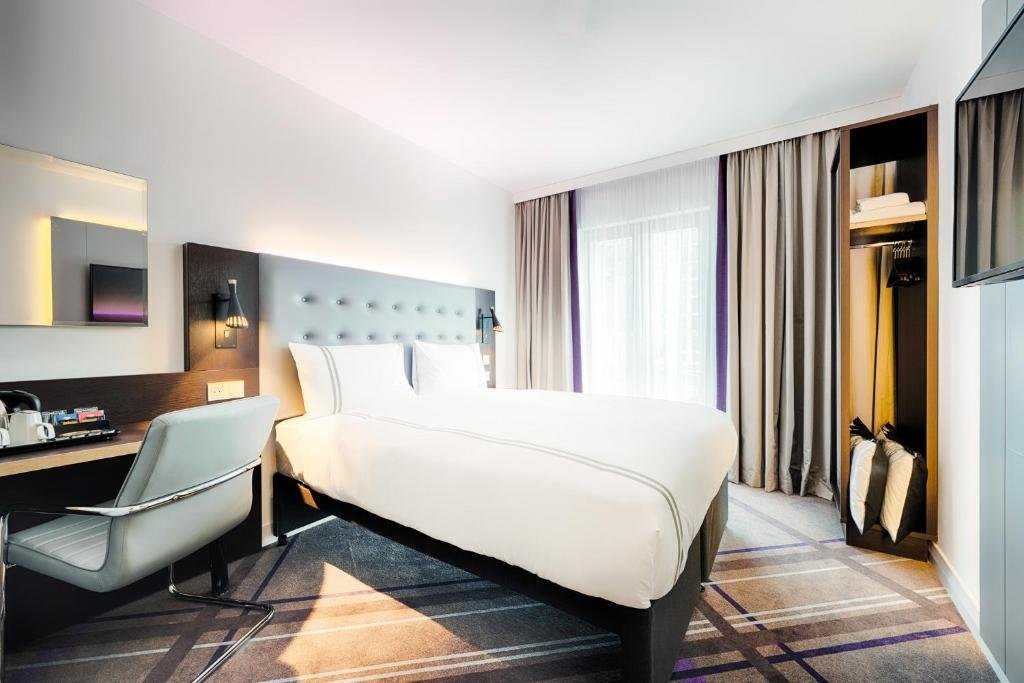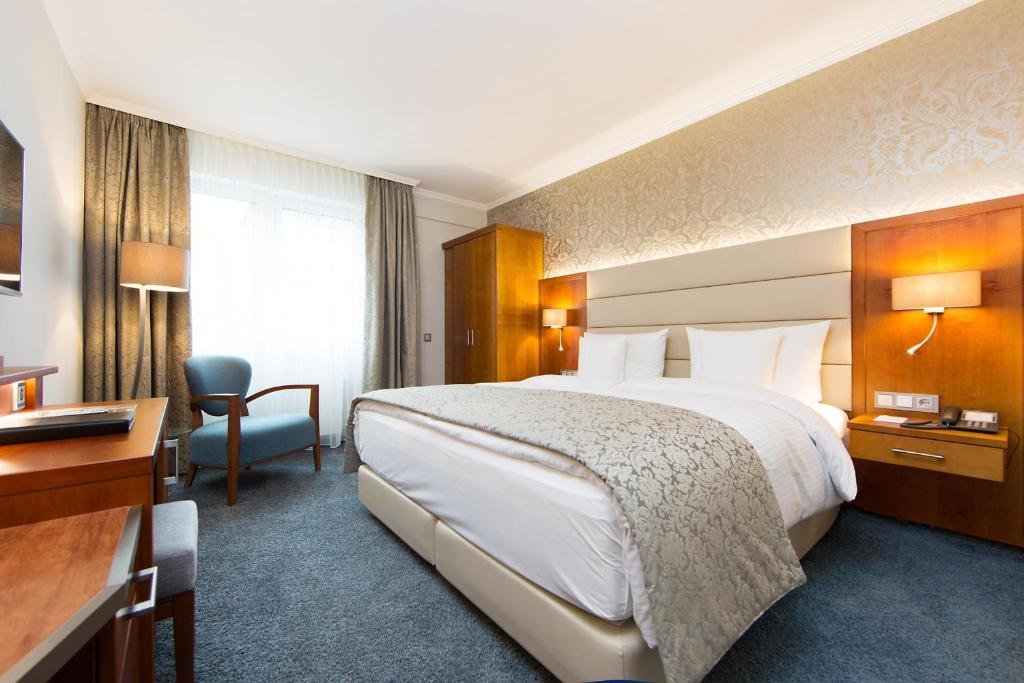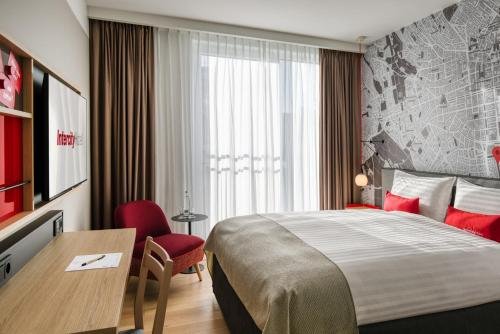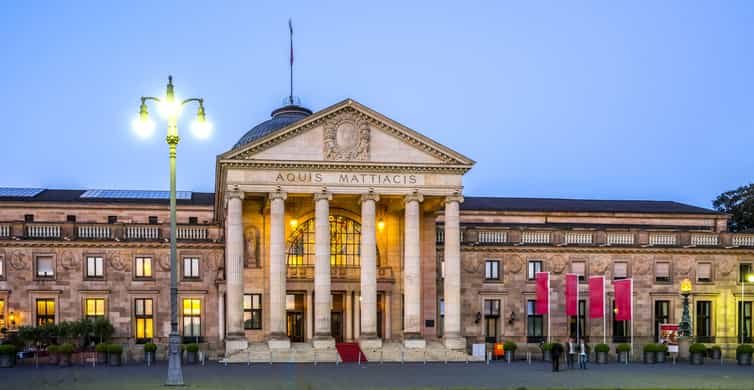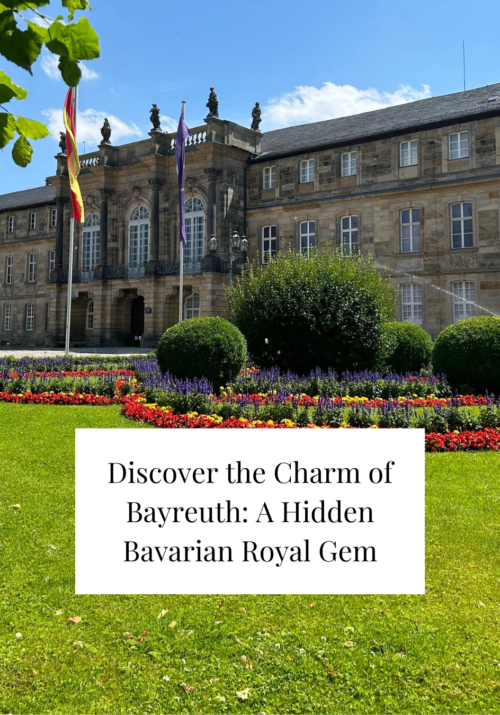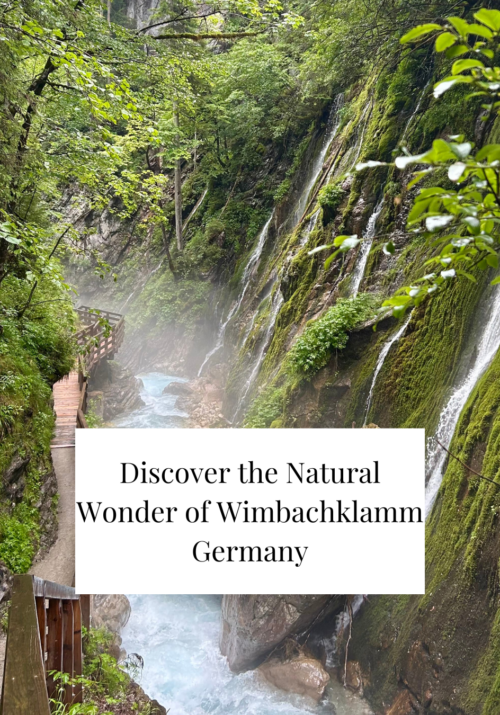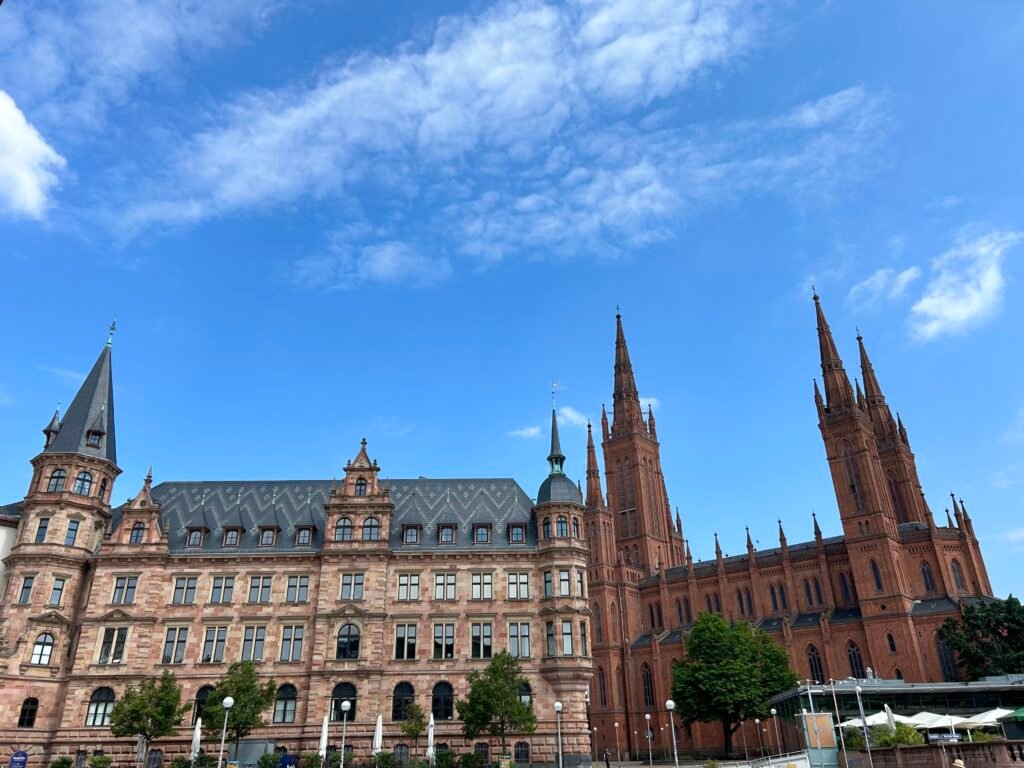
Known for sparkling wine, rich history, and natural hot springs, Wiesbaden is a city with much to offer for visitors seeking both relaxation and adventure.
I initially only visited Wiesbaden on my way to Mainz, but ended up getting lost in this beautiful city. Though short on time, I wish to go back and explore even more one day.
And now it’s your turn – here’s a quick guide to the best things to do in Wiesbaden for everyone!
Where is Wiesbaden, Germany?
Located in the heart of the Rheingau region, known for its Riesling wines, Wiesbaden is the home to many famous sparkling wines. Wiesbaden is located just 30 km west of Frankfurt, making it a perfect day-trip from the big city. Nestled along the beautiful Rhine River, Wiesbaden is directly across from Mainz, and is easily accessible. The journey between Frankfurt and Wiesbaden is 35 minutes by car, and 42 minutes by train (€11 one way). See the train timetable here
Where to stay in Wiesbaden
|
Primary Rating:
4.1
|
Primary Rating:
4.1
|
Primary Rating:
4.5
|
Primary Rating:
4.0
|
|
$121 / night
|
$104 / night
|
$98 / night
|
$87 / night
|
What to See in Wiesbaden, Germany
Wiesbaden is a city that blends historical charm with natural wonders. From historic churches to scenic parks, here are some of the top places to explore when in town.
1. St. Elizabeth’s Church (Russisch Orthodoxe Kirche Wiesbaden)
St. Elizabeth’s Church is a striking example of Russian Orthodox architecture and is one of the oldest and most significant Russian Orthodox churches in Western Europe. The church was built between 1847 and 1855 on the order of Duke Adolf of Nassau, who dedicated it to his late wife, Grand Duchess Elizabeth Mikhailovna of Russia (hence the name).
Fun fact: the tomb of Grand Duchess Elizabeth is in the crypt below the church.
The church is known for its five golden onion domes and distinctive Byzantine-Russian style, which stands out dramatically in the German cityscape of Wiesbaden.
Opening hours: daily 10am to 4pm
The church sits on Neroberg hill, offering panoramic views over Wiesbaden.
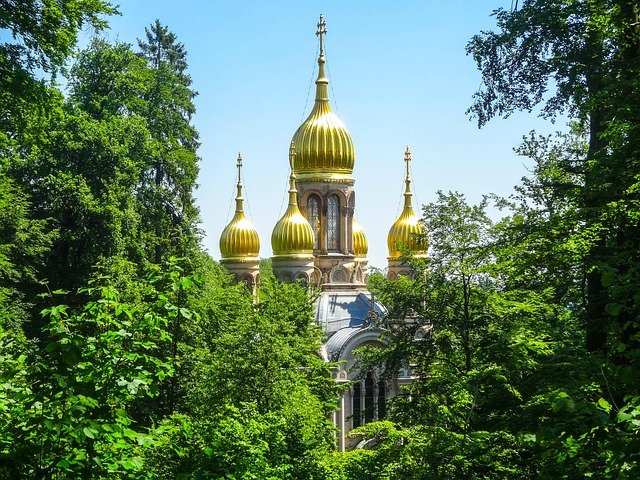
2. Enjoy a panoramic views from Neroberg
A quirky thing to do in Wiesbaden is to climb the Nero “mountain”. On one side of the Neroberg, you’ll find vineyards that have been in use since 1525. On the other is the famous Neroberg Temple, which was erected in 1851 makes for a picturesque backdrop for the view of Wiesbaden from above.
There’s also a small cafe and beer garden near the temple housed in what remains of the original Neroberg Hotel. The old hotel burned down in 1986, but the original tower is still standing.
You can get to the top of Neroberg by either taking the Nerobergbahn (Mountain Railway), which is Germany’s oldest water powered funicular.
Duration: 4 minutes (runs every 15 min.)
Opening hours: daily 9am to 7pm (be aware that the Nerobergbahn only runs through the spring and summer)
Return ticket Price: €6 (single trip is €4)
Or you can walk up to the top the old fashioned way. It’s a beautiful, easy walk
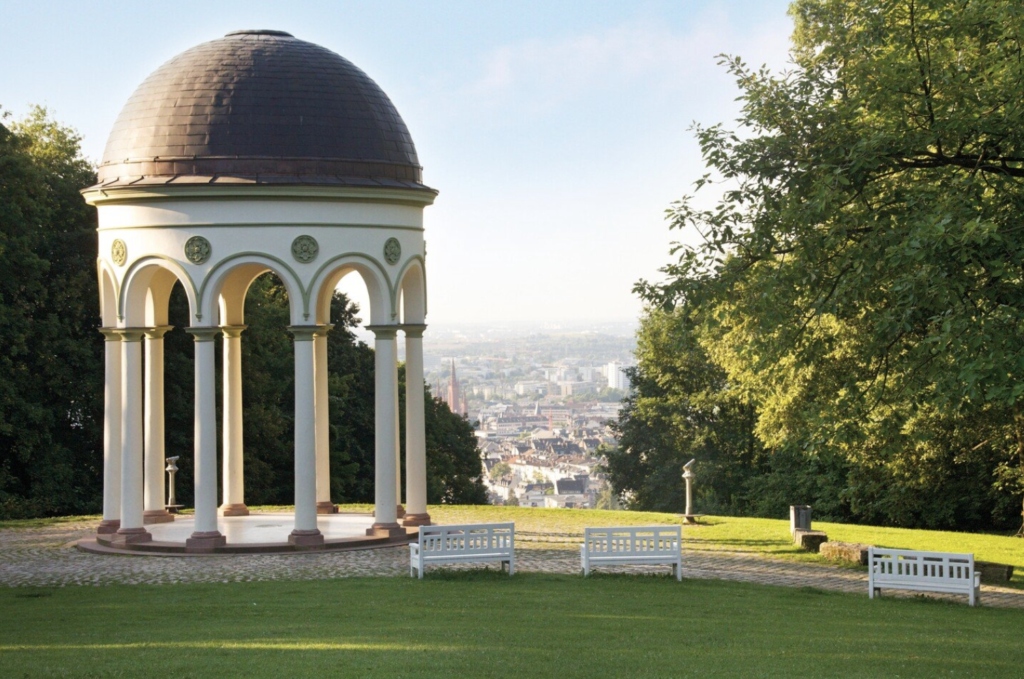
3. Marktkirche (Evangelical Market Church Wiesbaden)
One of Wiesbaden’s most iconic landmarks is the Marktkirche, an Evangelical church completed in 1862 in the Neo-Gothic style. The red brick church stands out against the city’s skyline in the middle of the castle square, close to the central market (hence the name Market Church) and the Old and New Town Hall).
Opening hours: tue-fri 12pm to 6pm / weekends 1pm to 5pm / closed on mondays
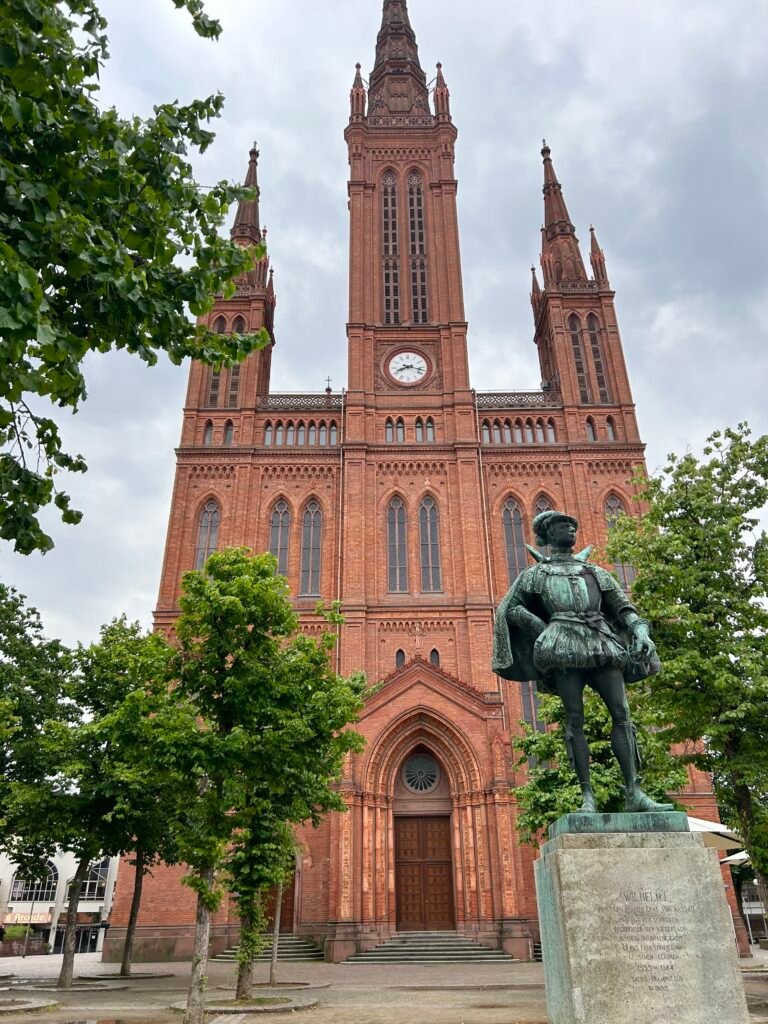
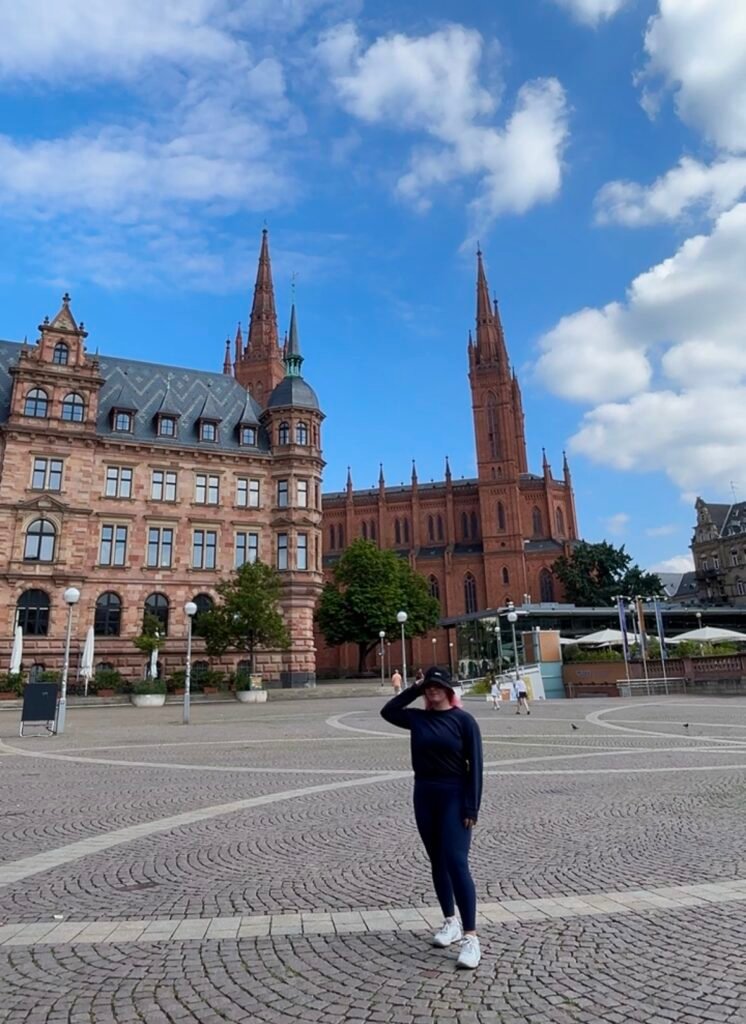
4. Altes Rathaus
The Old Town Hall was built in 1610, and is one of Wiesbaden’s oldest surviving buildings. Located at the Schlossplatz (Castle Square) near the Marktkirche, the Altes Rathaus originally served as the administrative center for the city. Today, the building serves as an event-space representing the historical heritage of Wiesbaden.
Duration: 1-2 hours
Live Local Guide
Free cancellation up to 24 hours in advance
From Goldgasse to Evangelical Market Church, get to know the city's most defining landmarks. Discover all the key facts about Wiesbaden, experience the local lifestyle, and taste its unique culture.
5. Neues Rathaus Wiesbaden
The New Town Hall was built during Wiesbaden’s rapid growth as a prestigious spa town and cultural center in the late 19th century.
Unlike many buildings in the city, it survived World War II relatively intact, preserving its historical architectural features.
Today it serves as the main administrative center of Wiesbaden.

6. St. Bonifatius, Wiesbaden
The church was built between 1844 and 1849 in the Neo-Romanesque style – designed by the same architect who also designed the Russian Orthodox St. Elizabeth’s Church.
St. Bonifatius is dedicated to Saint Boniface (Bonifatius in German), an Anglo-Saxon missionary who is considered the “Apostle of the Germans” for his role in converting Germanic tribes to Christianity in the 8th century.
The church was significantly damaged during World War II but still serves as an active parish church today. It was under construction when I visited, but almost impossible to not admire.
Opening hours: daily 7am to 7pm
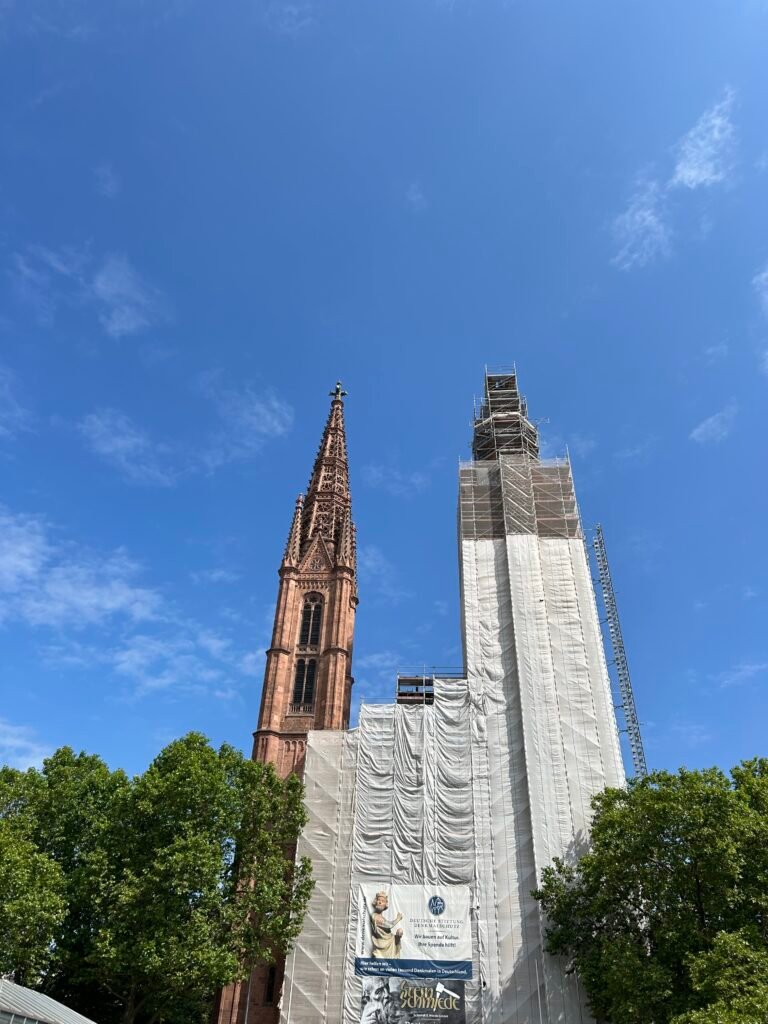
7. Giant Cuckoo Clock
This massive clock has a traditional hourly cuckoo chime, and is just a fun stop for those looking for a bit of a quirky feature.
8. Spielbank Wiesbaden
Known as one of Germany’s oldest casinos, this historic venue offers everything from slot machines to poker tables, along with a luxurious atmosphere. Whether you’re into gambling or simply enjoy the grandeur of the building, the casino is worth a visit.
I only visited during the day, and not in formal attire, so I didn’t enter the casino, but the building is still worth a look.
Opening hours: daily 11am to 4am

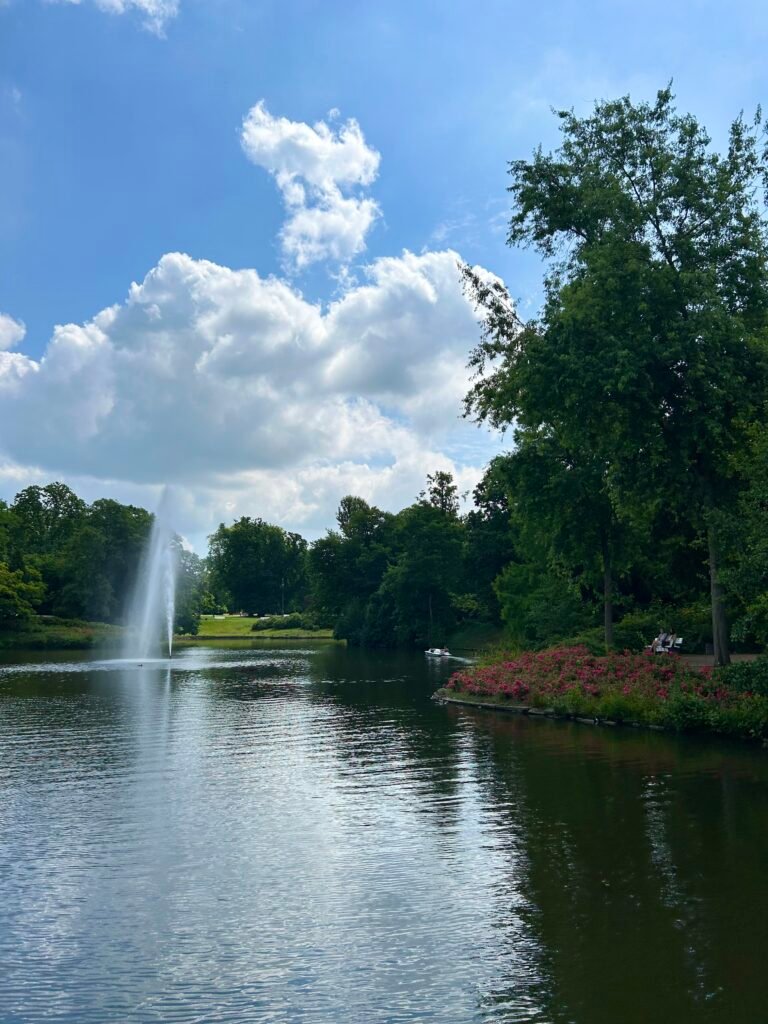
9. The Hessisches Staatstheater Wiesbaden
The Hessian State Theatre is the city’s premier venue for performing arts, hosting a variety of productions throughout the year, including ballets, operas, and plays. It’s home to the Hessian State Orchestra (one of the oldest orchestras in Germany) and hosts the annual International May Festival (Internationale Maifestspiele), one of Europe’s most famous performing arts festival.
I sadly didn’t get to visit the inside of the theatre, but it’s a stunning example of Historicism architecture. Read about current plays happening at the theatre here
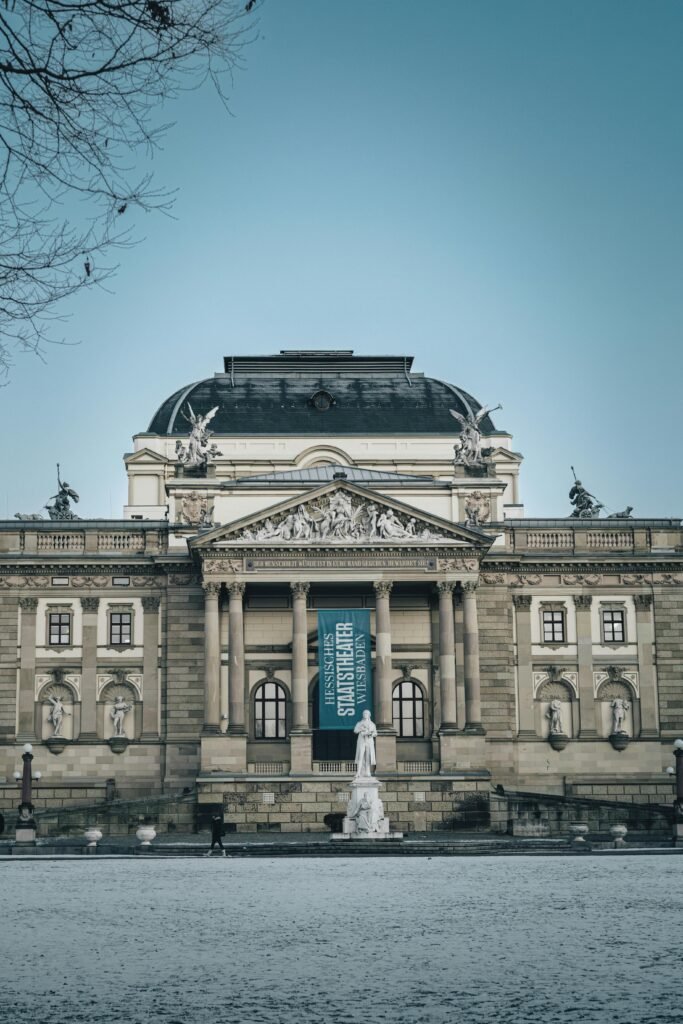

10. City Palace
The stadtschloss, was once the seat of the Dukes of Nassau, with over 140 rooms, but after the Second World War, the City Palace became the seat of the freely elected State Parliament in 1946, and is today known as the the Hessian State Parliament.
11. Wiesbaden Hot Springs
Wiesbaden is renowned for its natural hot springs, which have attracted visitors for centuries. The city has 26 hot springs, some of which are still used today in various thermal baths. These springs were central to Wiesbaden’s status as one of Europe’s top spa towns in the 19th century.
The famous Kochbrunnen fountain in the city center is one of the most iconic features, feeding from 15 of the city’s underground hot springs.
The most popular thermal spas are:
 Hotel Nassauer Hof
Hotel Nassauer Hof
They have a big rehabilitation centre with a gym, masseurs, a thermal pool and sauna. The thermal pool is designed like a conservatory, which means that you feel like you are outdoors when bathing.
Their facilities are only available to a limited number of external guests, so booking a stay at the hotel, is the best way to enjoy the spa.
Opelbad
A swimming pool on the Neroberg with a panoramic view over the city!
Opening hours: daily 7am to 8pm
Entrance fee:€12
Kaiser-Friedrich-Therme
These Irish-Roman baths were built between 1910 and 1913 on the site where the foundations of a Roman sweat bath were once found.
in the historic swimming hall you enter the water without wearing any clothing
Opening hours: daily 10 am – 10 pm (Tuesdays are women’s day)
Entrance 3 hours : €20
See all ticket prices here
Aukammtal thermal baths
The location in the Aukammtal park a little outside of Wiesbaden alone is in itself peaceful, but it also has an outdoor pool that can be used year-round thanks to the warm thermal water.
Opening hours: daily 8am to 10pm
Entrance fee: €15
12. Join a sparking wine tour
 Wiesabden: Sparkling Winemaking Tour with 3-Glass Tasting
Wiesabden: Sparkling Winemaking Tour with 3-Glass Tasting
Duration: 2 hours
Live tour guide
Free cancellation up to 24 hours in advance
Uncover what it takes to make all kinds of sparkling wine on a tour of the Henkell Freixenet production facility in Wiesbaden.
